
Considering that e-business as a concept was not part of most people’s vocabularies before the 1990s, the number of technologies and processes that have been developed since then is staggering. Some, such as Amazon.com’s “1-Click” checkout procedure, have revolutionized the way people buy products, while others, such as smart cards, have changed both enterprise and e-commerce transactions.
With the second decade of large-scale e-business dawning, the E-Commerce Times decided to poll several well-known industry analysts to get their thoughts on some of the patents that have altered the e-business landscape. Here are five examples worth noting.
The Foundation
Perhaps it should go without saying, but without the integrated circuit, e-business as we know it would not exist. Indeed, Yankee Group senior analyst Laura DiDio told the E-Commerce Times that “no discussion of high-technology patents — even if one is specifically talking about e-business patents — would be complete without mentioning two of the greatest geniuses in semiconductor technology, upon which the foundation for networking and e-business is based.”
Those inventors are the late Robert Noyce, who founded Fairchild Semiconductor in 1958 and later cofounded Intel, and Jack Kilby, a brilliant engineer at Texas Instruments. Like Edison and Tesla before them, they were working on the same invention at the same time, with Kilby using germanium and Noyce using silicon for the semiconductor material.
“In designing a complex electronic machine like a computer, it was always necessary to increase the number of components involved in order to make technical advances,” DiDio explained. “The monolithic (formed from a single crystal) integrated circuit placed the previously separated transistors, resistors, capacitors and all the connecting wiring onto a single crystal (or ‘chip’) made of semiconductor material.
“In 1959, both parties applied for patents,” DiDio added. “Jack Kilby and Texas Instruments received U.S. patent #3,138,743 for miniaturized electronic circuits, while Robert Noyce and the Fairchild Semiconductor Corporation received U.S. patent #2,981,877 for a silicon-based integrated circuit. The two companies wisely decided to cross-license their technologies after several years of legal battles, creating a global market now worth about $1 trillion a year.”
After the first commercial integrated circuits became available in 1961, all computers began to be built using chips instead of individual transistors and their accompanying parts, DiDio said.
“The original IC had only one transistor, three resistors and one capacitor and was the size of an adult’s pinkie finger,” she noted. “Today, an IC smaller than a penny can hold 125 million transistors. Almost all modern products use chip technology.”
Of RSA and DRM
Both Gartner research director John Pescatore and Forrester Research analyst Jan Sundgren told the E-Commerce Times that the recently expired RSA patent also played a key role in e-business by providing secure encryption standards for transmitting information sent online. (RSA stands for Rivest, Shamir and Adelman, the inventors of the technology.)
As defined by Webopedia, the RSA algorithm “is based on the fact that there is no efficient way to factor very large numbers. Deducing an RSA key, therefore, requires an extraordinary amount of processing power and time.”
In fact, Webopedia states, the algorithm is so powerful that the U.S. government restricted its export to other countries.
For his part, industry analyst Rob Enderle told the E-Commerce Times that InterTrust Technologies’ (now co-owned by Sony and Philips) digital rights management (DRM) patents are some of the most important in e-business.
After all, Enderle noted, DRM remains a critical part of how intellectual property is sold over the Web. The technology goes to the core of how organizations like the Recording Industry Association of America will provide content legally to buyers of digital music, movies and other media. With the online music industry gaining mainstream acceptance as more and more companies enter the marketplace, DRM is poised to take center stage as a competitive differentiator among online music rivals.
Pushing E-Mail
On the mobile front, Yankee Group analyst John Jackson told the E-Commerce Times that Research In Motion’s patents on “push” wireless e-mail have led to a seminal e-business implementation that will become increasingly influential as it becomes more widely adopted.
“You can get e-mail anywhere, theoretically, [without having] to ask,” he said. “It’s ‘pushed’ to you…. As soon as it hits your desktop, it hits your BlackBerry.”
He noted that RIM’s architecture is both a blessing and a curse for information workers. After all, while it enables employees to be “super-productive, excuses for being out-of-reach [are] now fewer and farther between.”
RIM’s push wireless e-mail already has spawned imitation and competition from other vendors. However, many large-scale vendors, such as Microsoft, Nokia and Palm, are simply licensing RIM’s patented technology for their own devices. According to Jackson, RIM just does it better than anyone else.
Business-Method Patents
Business-method patents, such as Amazon’s 1-Click technology, may be one of the most lucrative — and hotly contested — groups of e-business-related patents to have emerged in the last several years. According to legal Web site NOLO.com, a business-method patent is some combination of software and business methodology that can be categorized as a specific process. Once secured, these patents, like other types of patents, remain under the creator’s control for nearly two decades. That means Amazon receives a fee every time another e-commerce vendor licenses its checkout process.
GartnerG2 research director Mike McGuire told the E-Commerce Times that the case that jump-started the business-method patent juggernaut was the 1998 decision by the Court of Appeals for the Federal Circuit in State Street Bank & Trust Co. v. Signature Financial Group. In that case, the court did away with the “business methods exception” to patentability and upheld a patent on a software program that was used to make mutual-fund asset allocation calculations, McGuire said, quoting a lecture by William Fisher, a professor at the Berkman Center for Internet and Society at Harvard Law School. This decision opened the door for companies to patent other business methods and processes — and they did.
In all, the types of patents that have influenced e-business evolution run the gamut from highly technical to almost entirely process-based. Their common thread is their lasting impact on the way business is done.

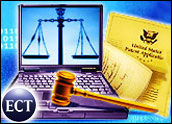

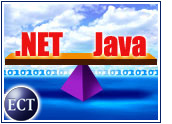




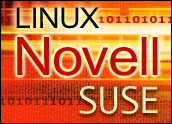
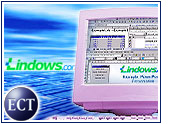
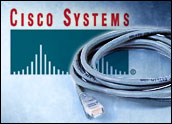
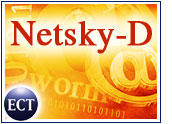











































Social Media
See all Social Media